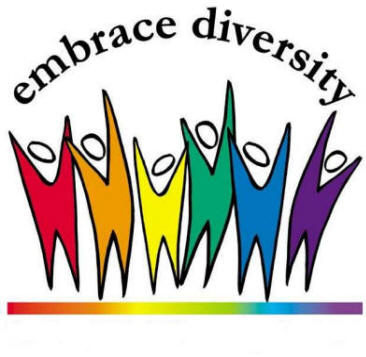This weekend, if you were on Twitter, you might have seen a lot of tweets under the hashtag: #WeNeedDiverseBooks. It was a very empowering and exciting weekend. I love when people stand up for something important!
It is a cause that goes straight to the heart of WHY we write books. Diverse characters don’t just make books more interesting. All children should be able to see themselves in books. Our world is composed of many kinds of people and stories. We gain empathy by reading about someone different from us.
We are all “other” in our own way.
Writers, this is something we should be thinking about.
Our readers are depending on us!
But if you are a white able bodied, middle-aged woman (like me), do you have the right of way to add diversity to your stories? Are there special considerations or guidelines to keep in mind? Or are the rules for creating diverse characters–characters of different races, abilities, genders, and orientation–the same for creating all characters?
When I first began writing HEAD CASE, the story of a boy paralyzed from the neck down, I worried about this all the time. I felt a deep responsibility to represent this character authentically. Frank had to be more than just paralyzed. His story had to be about more than “being paralyzed.” He had to be a three dimensional person with a past and a future, fears and desires. I spent a lot of time talking to paralyzed men and their doctors and therapists. I also talked to a lot of people who had accidentally killed others.
I learned a lot! (Mostly: that everyone has a story and that when you find one, you have to tell it!)
Today, I want to urge anyone who is feeling hesitant about this: it is important to consider diversity as part of your characters’ profiles…but only if it is authentic…if it serves the story. If it is true.
So…now what? How do we create diverse characters who are not stereotypical?
Start with the basics:
Ask the questions:
- What do your characters want and why?
- What are their fear? Their strengths? Their flaws?
- What are their deepest wounds?
- What are their main occupations?
Hopefully, your answers will create characters with different motivations—motivations that will create tension and urgency in your scenes.
Then, keep digging.
ASK
- WHO ARE YOU? I ask and answer this question about 100 times per character. I look for the answers to this question when I first meet a person as well as the answers to this question when I know a person deeply. I want to know EVERY NUANCE about a character. With tenacity and patience, I can usually find the seed of a subplot! I can create TEXTURE.
Then create some scenes:
- What is the worst thing that could happen to a character?
- What is the best thing?
- What would bring out the best in him? The worst?
Then: JOURNAL. Voice is so important to creating authentic characters. I like to journal in the POV’s of all my important characters.
Is this the same advice I would give you for creating any character?
Yes. I guess it is!
The amazing thing that happened with Head Case is that the more I understood Frank, the more I realized we had some emotional stuff in common. I saw him as a modern Hester Prynne. I realized I had felt that way, too. (Really…who hasn’t?) By seeing him as more than a message, I found the emotional heart of my novel.
For me, the trick is to be respectful and tenacious. Get into those characters’ heads. Figure out what makes them unique. Find their gestures, their favorite words, and their favorite foods. Don’t settle for easy answers. Keep asking and answering WHO ARE YOU?
Our goal as writers is to create a diverse world of unique, authentic characters. It is worth the struggle to do this work.
Embrace diversity!
If you like posts like this, sign up for my newsletter, Monday Motivation! You can find the link on my website under TIPS!

